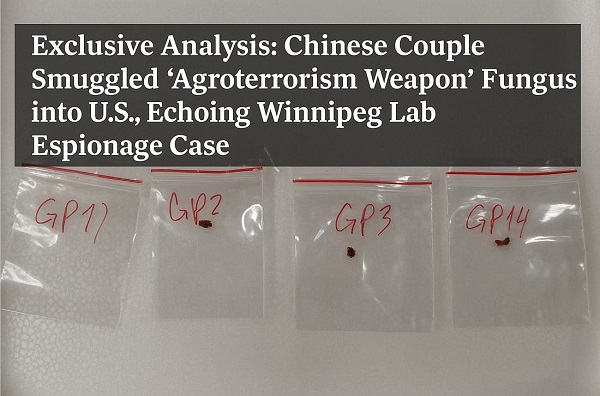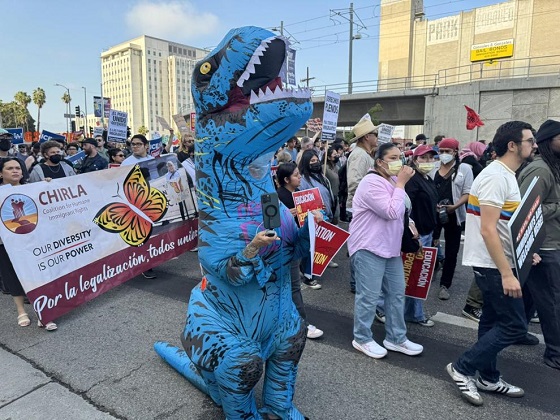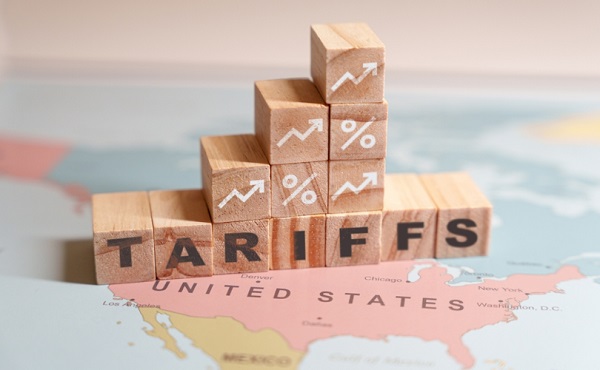Crime
How Chinese State-Linked Networks Replaced the Medellín Model with Global Logistics and Political Protection

Zhenli Ye Gon, aka “El Chino” ran a meth empire from Mexico City supplied and set up by a Chinese Communist Party linked conglomerate called Chifeng Arker.
The Rise of ‘El Chino’ — A New Blueprint for Beijing’s Narco-Industrial Power
In the 1980s and ’90s, U.S. agents dismantled the Medellín Cartel not by chasing Pablo Escobar directly, but by targeting the structure around him—the lawyers, accountants, and corporate fixers who laundered his fortune. For Don Im, a key figure in the DEA’s inner circle during that campaign, it was a hard-won lesson that stayed with him across decades of global narcotics investigations.
“You can take down the cartels all you want—cartels are easy to replace,” Im told The Bureau. “It’s the bankers, the businessmen, the lawyers, and the accountants that are harder to get. Because they’re the inconvenient targets.”
By “inconvenient,” Im means politically protected. Ultimately, geopolitically protected.
Today, he sees history repeating itself—only on a far more dangerous scale. Where Colombian cocaine traffickers once flooded American cities, Chinese-backed methamphetamine and fentanyl empires now dominate, shielded by Party-state logistics and financial infrastructure. The operations are more sophisticated—executed with near impunity.
“I worked with Steve and Javier,” Im said, referencing DEA agents Javier Peña and Steve Murphy, the duo immortalized in Narcos. “And how Pablo was taken down? His accountants and lawyers were the first to be removed. That made Pablo a bigger, more vulnerable target. Unless we go after the facilitators—accountants, lawyers, businessmen, and corrupt government officials—you’re never going to affect the illicit drug trade or the money it generates.”
That insight brings Im back to a dilemma that continues to trouble him, even three years into retirement: how to dismantle narco empires entrenched in Canada and Mexico, shielded not only by senior Chinese Communist officials profiting from the fentanyl trade, but also by troubling ties to Western political figures. The conundrum, he says, is captured in what some DEA veterans view as the most overlooked turning point in global narco-trafficking—the rise of Chinese-Mexican pharmaceutical magnate Zhenli Ye Gon.
Now imprisoned in Altiplano, Mexico’s maximum-security fortress, Ye Gon was a legendary figure in Las Vegas—dubbed the “Mexican-Chinese whale” for his extravagant losses at casinos like the Venetian, where he gambled over $125 million between 2004 and 2007, all while running a billion-dollar methamphetamine empire.
His ascent in Western Hemisphere drug trafficking was too rapid to be accidental.
“I think he arrived in Mexico City in 1998 or 1999,” Im recalled. “And then within two years, he received Mexican citizenship from President Vicente Fox. So that shows you how influential and effective he was in penetrating the highest levels of the Mexican government.”
Once established in Mexico, his pipeline to CCP-linked suppliers began flooding Mexican ports—with a high-end production facility built with technical assistance from China.
“He’s still in prison asking for another $270 million back—after $207 million was already seized,” Im said, his voice tightening with outraged disbelief. “And he’s still sitting there. He was the largest pseudoephedrine importer from China into Mexico. His companies and infrastructure are still intact.”
When asked who is running the infrastructure today, Im didn’t hesitate.
“His associates and his family members.”
“He imported seven or eight high-powered, top-of-the-line pill press machines from Germany—each capable of cranking out at least half a million pills every two days,” Im said. “The Mexican authorities seized one.”
That leaves a troubling question: Have the remaining pill presses continued producing fentanyl-laced counterfeit oxycodone pills for the past decade—operated by Ye Gon’s family members and Chinese-linked criminal associates, in alliance with the Sinaloa Cartel—even as he sits in prison, with impeccable supply ties to Chinese Communist Party-controlled precursor firms still intact?
The Bureau’s review of DEA records and U.S. extradition documents suggests Ye Gon’s operations extended far beyond chemicals and a single Mexican factory built with assistance from a Chinese precursor supplier. His financial network revealed a laundering architecture as vast and deliberate as his synthetic drug supply chain.
According to DEA calculations, Ye Gon’s company illegally imported nearly 87 metric tons of a key methamphetamine precursor over just a few years—enough to yield more than 36 metric tons of high-purity meth. At conservative estimates, the precursor was worth over USD $188 million. Once converted and sold on American streets, the finished product could generate more than USD $724 million.
Chemical Supply Meets Political Shield: Chifeng Arker’s Role in the Fentanyl Pipeline
On September 24, 2003, Ye Gon’s Mexico-based firm, Unimed México, signed a supply contract with Chifeng Arker, a company based in Inner Mongolia with links to Shanghai. The deal called for the annual purchase of at least 50 metric tons of a chemical used to manufacture pseudoephedrine—a primary precursor in the production of methamphetamine. Once processed, the substance forms the essential base for high-purity crystal meth.
While Washington remains rightly focused on the toll of fentanyl, Im says the devastation wrought by methamphetamine is comparable. Beyond generating revenue to fund fentanyl production, meth ravages communities and drains health care and policing budgets in blighted states.
The scale at which Ye Gon operated—importing dozens of tons of precursors and building a high-end production plant—could not realistically have been achieved without tacit support from elements of the Chinese state.
In effect, Chifeng Arker agreed not only to supply enormous volumes of this chemical, but also to support Ye Gon in running his Mexican production plant.
“The contract also called for Chifeng Arker to provide technical support to aid Unimed in the actual production of pseudoephedrine, to include ‘workshop housing design,’” U.S. government extradition records state. “In October 2005, Ye Gon began to build and equip a manufacturing plant in Toluca, Mexico, with the help of Chinese advisors, as contemplated by the September 2003 contract with Chifeng Arker.”
Both Ye Gon and his chief chemist, Bernardo Mercado Jiménez, signed the agreement.
Court records suggest Ye Gon and a team of Chinese workers were directly involved in methamphetamine production.
“Chinese workers helped with the start-up of that plant, as contemplated by the Chifeng Arker contract,” states a 2013 U.S. District Court extradition filing from West Virginia. The filing continues: “According to workers at the plant, the facility received daily shipments of a white, hard chemical substance that was heated with hydrochloric acid to obtain a white crystalline powder. … At the end of the day, that powder was bagged and driven away by Ye Gon or his personal driver.”
Pursuant to the contract, shipments of precursor chemicals flowed from China to Mexico between 2004 and 2006. After mid-2005, Mexico revoked its license amid a chemical diversion crackdown. Ye Gon and Chifeng Arker shifted to more covert methods.
Evidence from U.S. court and extradition records shows that at least four large illicit shipments—totaling tens of thousands of kilograms—were dispatched in 2005 and 2006. To avoid scrutiny, they were routed through a Hong Kong shell company called Emerald Import & Export and labeled misleadingly.
During this period, Chifeng Arker effectively served as Ye Gon’s offshore factory, supplying raw materials for meth production.
The financial connection ran just as deep. Ye Gon used Mexican currency exchanges—casas de cambio—to launder payments to Chifeng Arker. In one documented instance, a single exchange processed three payments totaling $2 million USD to Arker, timed to coincide with the Hong Kong shipments.
Corporate record searches show that Chifeng changed its ownership structure after scrutiny from U.S. authorities. Its current parent company in Shanghai—publicly traded in Hong Kong—is nearly 50 percent owned by state-controlled or linked pharmaceutical firms, with 29 percent held by the Shanghai State-owned Assets Supervision and Administration Commission (SASAC).
This structure underpins what DEA experts like Im argue: that major figures such as Zhenli Ye Gon—and, even more so, his Chinese Canadian counterpart Tse Chi Lop—serve as “command and control” for the Western Hemisphere’s fentanyl and money laundering networks. Their global narco empires, Im says, operate with the knowledge, protection, and involvement—sometimes directly—of senior Chinese Communist Party officials.
The staggering scale of these synthetic narco empires—decentralized across North America, yet rooted in state-directed chemical output from Communist Party-controlled or Party-influenced firms such as Chifeng—is reflected in the DEA affidavit that led to Ye Gon’s conviction.
When Mexican prosecutors raided his Mexico City residence in 2007, they found $205.5 million in U.S. cash stacked in suitcases, closets, and false compartments. Another $2 million in foreign currency and traveler’s checks was seized along with luxury goods, high-end jewelry, and receipts from Las Vegas casinos. Federal agents also confiscated seven firearms, including a fully automatic AK-47.
Equally disturbing was a handwritten note found among Ye Gon’s seized records. “Due to the detention of the flour, my associates and I had some problems,” it read. “I have contact with customs. Call me to work.” Investigators interpreted “flour” as code for a seized chemical shipment, and “books” as shorthand for drug proceeds. The reference to “contact with customs” pointed to a corrupt facilitator within Mexico’s border control system—an insider positioned to keep the chemical pipeline open. For veteran DEA agents, it was a textbook indicator of entrenched, systemic corruption.
Federal agents later executed a search warrant at UNIMED’s corporate headquarters in Mexico City. There, they discovered an additional $111,000 in cash, along with records for bank accounts in the United States, China, and Hong Kong. Wire transfer receipts and confirmation pages linked UNIMED to Mexican currency exchanges, detailing the flow of funds from Mexico into accounts across the United States and Europe.
“From a law enforcement standpoint,” the affidavit stated, “these casas de cambio have been widely used by drug trafficking organizations in Mexico and South America to insert their illegal drug proceeds into the legitimate world financial systems in an attempt to disguise the origin of the money and launder its criminal history.”
The DEA affidavit reads like an early blueprint—one that foreshadowed the global expansion of Chinese money laundering and chemical dominance over synthetic drug production.
It documents how, by 2004, escalating U.S. enforcement and tighter international controls on precursors like pseudoephedrine forced methamphetamine production out of the United States and into Mexico. By 2006, Mexican authorities had seized what were then the two largest meth labs in the Western Hemisphere. These industrial-scale operations were directly linked to trafficking routes into the United States and supplied by Chinese precursor chemicals. They marked the emergence of a decentralized manufacturing model—one that has since migrated north and now operates inside Canada.
The affidavit also provides forensic insight into how, beginning in the early 2000s, Chinese state-linked traffickers assumed control over global money laundering for ultra-violent Latin American cartels.
While Ye Gon’s reputation as a high-rolling gambler—losing at least $125 million in Las Vegas casinos between 2004 and 2007—is well documented, what appears to have gone unreported is that the DEA’s Las Vegas field office obtained intelligence directly tying his casino activity to laundering operations for a major Mexican drug cartel.
“A Mexican organized crime group began blackmailing YE GON in México,” stated an affidavit by DEA Special Agent Eduardo A. Chávez. “According to YE GON, the group wanted to store cash at YE GON’s residence in México City. In addition to storing cash, the group wanted YE GON to launder their money. YE GON told the source that he knew the money in his house was ‘dirty money’ and the proceeds of narcotics trafficking. YE GON told the source that he continually received threats against himself and his family, so he believed that he had no choice but to launder the money. YE GON told the source that the traffickers instructed him to use his bank accounts to send the money to Las Vegas, where he could launder it.”
It’s just one vivid example of the deep integration between Chinese money launderers and Mexican cartels. While the cartels clearly operate with a brutality that commands respect—and sometimes fear—from their Chinese partners, ultimately, it is the Chinese networks that reign supreme: they control the finance, the chemicals, and the decentralized factory components underpinning the global trade. As Ye Gon’s case indicates, they sit at commanding heights.
Target the Enablers or Lose the War
The case documented a tectonic shift: the outsourcing of cartel financial operations to Chinese actors—and a new era of synthetic narco-capitalism governed not by territorial control, but by logistical mastery.
DEA agents tracking that shift—the transfer of global laundering and chemical command to China—soon formalized their findings within a strategic U.S. intelligence framework. While Don Im was leading DEA financial operations in New York, the U.S. government launched an initiative known as Linkage, designed to map the evolving East Asian narcotics supply architecture. The strategy identified how Chinese and Southeast Asian syndicates operated like a chain of interlocking specialists in chemical production, international transport, and financial laundering.
“Linkage was an initiative to identify the entire supply chain from the United States back into Southeast Asia,” Im recalled. “They called it Linkage because the way Chinese and other Asian traffickers were operating was like a chain: independent manufacturers, independent transporters, independent distributors—all linked. They didn’t work for one another, they worked with one another, relying on their specialties—production, transportation, smuggling, distribution.”
The other side of the counter-narcotics effort was the Linear Initiative, which attacked the supply chain flowing from Bolivia, Peru, and Colombia into the U.S. Today, those organizations outsource laundering to Chinese brokers—who need the cash, while the cartels need access to their polydrug profits in North America, Europe, and Australia.
This led directly to one of the most controversial cases of the era: HSBC.
Operation Royal Flush—an extension of both Linkage and Linear—targeted the financial backbone of these networks by tracing dirty cash upstream to their command centers.
“We targeted a South American bank and ended up identifying HSBC as essentially just blatantly violating anti-money laundering laws, rules, and regulations,” Im said. “We realized they were helping facilitate not just Mexican cartels, but South American cartels, Russian organized crime, Chinese organized crime, Italian organized crime—all throughout the world. And they just got a slap on the wrist: a $1.9 billion fine.”
The case continues to reverberate inside the DEA—especially after agents watched with disbelief as Canadian authorities recently imposed just a $9 million fine on TD Bank, despite mounting evidence of large-scale fentanyl money laundering through its North American branches, orchestrated from Toronto. For years, the activity appeared to proceed largely unchecked, even as Canadian police and senior political officials were warned of systemic vulnerabilities by the country’s financial intelligence agency, FINTRAC. Only after DEA investigators, working through the U.S. Department of Justice, advanced a sweeping probe did the true scale of the operation begin to surface.
According to sources including former U.S. State Department investigator David Asher, the case involved Chinese international students and underground bankers funneling drug cash into bank branches across the Tri-State area. Investigators traced “command and control” links to the Triad syndicate led by Tse Chi Lop—an empire rooted in Toronto and Vancouver, with longstanding ties to the Chinese Communist Party and direct links to precursor chemical factories that generate GDP for Beijing.
This brings Don Im’s most troubling observations into sharp focus—particularly Ottawa’s handling of the TD Bank case, and his deeper concern that the only effective way to confront fentanyl trafficking is to follow the money all the way to the top of political and corporate power. But that, he reiterates, is also the path into politically “inconvenient” territory.
In many ways, Im believes, following the money to the highest levels of Western enablers—once so effective in dismantling Pablo Escobar’s empire—has become a lost art. And one, he argues, that must be revived.
What he now calls for is a no-holds-barred international campaign—led by informed citizens and coordinated governments—from Vancouver to West Virginia.
“These same cartels, brokers, and Chinese precursor suppliers behind the fentanyl crisis in North America are also pushing cocaine, heroin, and meth in Europe and Australia—and Canada,” Im said.
The DEA must expand its global presence, Im argues, and embed sources deep inside the very organizations responsible for poisoning the West.
“And the nonsense view that only fentanyl should be targeted is absolutely mind-boggling,” he said. “Profits from heroin, cocaine, methamphetamine are used to produce fentanyl.”
For Im, the stakes are no longer merely criminal—they are existential. The West, he believes, is locked in an asymmetric conflict with Beijing.
“The Chinese Communist Party at all levels has been aware of the magnitude of global drug trafficking and, specifically, the cheap and easily available liquid capital and cash that can be purchased, bartered, converted, invested for any beneficial CCP-sponsored initiative—directly or indirectly—and satisfies elements of corruption at every level,” Im told The Bureau. “This is in line with the 100-year vision to expand their influence—not to destroy the West but to plunder and exploit the wealth, technology, and abundant liquid capital from the massive drug trade in North American and European consumer cities for their benefit.”
Next in this series: Narco-Funded Belt and Road
The Bureau is a reader-supported publication.
To receive new posts and support my work, consider becoming a free or paid subscriber.
Editor’s Note: Don Im shares this message in conjunction with The Bureau’s ongoing investigative series, which aims to inform international policy responses to the Chinese Communist Party’s role in facilitating a hybrid fentanyl war.
“I followed and worked with many incredible agents, task force members, and intelligence analysts from the DEA, FBI, legacy U.S. Customs, IRS, RCMP, and DOJ prosecutors—professionals who dedicated their lives to combatting Asian organized crime. These unsung heroes risked their lives. Two DEA Special Agents—Paul Seema and George Montoya—gave their lives in 1988, and DEA Special Agent Jose Martinez was wounded in this war. Their dedication, efforts, and impact live on in the criminal data systems of the various agencies.”
Invite your friends and earn rewards
Crime
Exclusive Analysis: Chinese Couple Smuggled ‘Agroterrorism Weapon’ Fungus into U.S., Echoing Winnipeg Lab Ebola Espionage Case

 Sam Cooper
Sam Cooper
Potential Bioweapon Smuggling Across Borders: FBI Case Parallels Chinese Military Ties and Bio Espionage at Canada’s Top Lab
In a chilling insider threat case bearing striking similarities to China’s covert use of a married couple to develop an Ebola bioweapon and bat coronavirus research using Canada’s highest-security lab in Winnipeg, a Chinese researcher in Michigan and her boyfriend have been charged with smuggling a biological pathogen described as a potential “agroterrorism weapon” into the United States, according to federal charging documents unsealed Tuesday.
The FBI alleges that Yunqing Jian, a “loyal” Chinese Communist Party member and a 33-year-old postdoctoral researcher at the University of Michigan, and her boyfriend Zunyong Liu, 34, conspired to smuggle dangerous biological material, committed visa fraud, and made false statements to federal agents after U.S. border officials discovered samples of Fusarium graminearum hidden inside Liu’s backpack at Detroit Metropolitan Airport. The reddish plant material—identified as multiple strains of a fungus known to devastate cereal crops—was concealed in four plastic baggies, wrapped in tissues.
It was not the couple’s first illicit border crossing with biological materials. The case underscores a broader pattern: repeated clandestine transfers of biohazards across North American borders; visa fraud by Chinese students accessing elite laboratories; loyalty pledges to the Chinese Communist Party by researchers; and the strategic use of Chinese military-linked research grants—all elements shared with the notorious Winnipeg case.
At Canada’s National Microbiology Laboratory, researchers Dr. Xiangguo Qiu and her husband, Keding Cheng, secretly collaborated for years with China’s top biowarfare institutions—including the Wuhan Institute of Virology and the Academy of Military Medical Sciences. In 2019, Qiu and Cheng coordinated the unauthorized export of live Ebola and Henipah virus samples from Winnipeg to Wuhan. Canadian intelligence documents indicate that Keding Cheng pledged loyalty to the Chinese Communist Party, while Dr. Qiu was recruited as a key collaborator on the Wuhan lab’s bat filovirus project, which multiple Western intelligence agencies now assess resulted in an accidental lab leak that caused the COVID-19 pandemic.
The FBI’s newly unsealed agroterrorism case also details coordinated lab penetration involving facilities in Texas, Michigan, and Zhejiang University in China, dating back to at least 2022. In July 2024, Liu arrived in Detroit on a tourist visa while carrying several undeclared samples of the fungus, in violation of U.S. import restrictions, according to a sworn affidavit.
Since August 2022, Jian—evidently operating under Chinese Communist Party direction—had also worked at a university in Texas, where her research focused specifically on Fusarium graminearum. According to the FBI affidavit, her work at both the Texas institution and the University of Michigan was funded by the Chinese government. Files recovered from Jian’s phone included a signed “annual self-assessment form” dated January 2024 from Zhejiang University, in which she outlined her research accomplishments and affirmed her loyalty to the principles of the Chinese Communist Party.
“Electronic evidence also shows that Jian has been involved in smuggling packages of biological material into the United States on prior occasions,” the indictment alleges.
The allegation of Chinese funding and bonds of loyalty are critical to the case. Radio Free Asia has previously reported that many thousands of Chinese students studying abroad on government-backed scholarships are required to sign such forms as part of their continued funding.
The new U.S. indictment suggests a growing pattern of covert Chinese state-directed espionage activity targeting elite research facilities in North America, with espionage agents working under cover of academics and science—specifically involving romantic pairs who exploit Western institutions and scientific openness to traffic pathogens with dual-use potential.
U.S. Attorney Jerome Gorgan said in a statement: “The alleged actions of these Chinese nationals—including a loyal member of the Chinese Communist Party—are of the gravest national security concerns.”
“These two aliens have been charged with smuggling a fungus that has been described as a ‘potential agroterrorism weapon’ into the heartland of America, where they apparently intended to use a University of Michigan laboratory to further their scheme,” Gorgan added.
According to case filings, “Fusarium graminearum is responsible for billions of dollars in economic losses worldwide each year,” and “toxins produced by Fusarium graminearum cause vomiting, liver damage, and reproductive defects in livestock and humans.”
Agroterrorism is a form of hybrid warfare targeting a population’s food supply and economy. It involves the malicious use of plant or animal pathogens to cause devastating diseases and is closely related to biological and chemical warfare.
Liu and Jian had previously studied the pathogen as university students in China, according to the FBI. Since 2023, Jian had been working at the University of Michigan’s Molecular Plant-Microbe Interaction Laboratory, a facility focused on understanding the molecular biology of crop disease and plant immune responses.
Liu initially told U.S. Customs and Border Protection officers that he didn’t know what the materials were and suggested someone else must have planted them in his bag. But he quickly changed his story under FBI questioning.
“Liu stated that he intentionally hid the samples in his backpack because he knew there were restrictions on the importation of the materials,” the complaint says. “Liu confirmed that he had intentionally put the samples in a wad of tissues so CBP Officers would be less likely to find and confiscate them, and he could continue his research in the United States.”
Court filings show that Liu intended to deliver the samples to Jian’s lab and assist in cloning and culturing the fungus, should earlier experiments fail. Investigators say the couple coordinated in advance and had previously communicated about biological sample transfers.
When investigators spoke to Jian, she denied knowing anything about Liu’s smuggling or plans to research the pathogen.
But an examination of Liu’s and Jian’s electronic devices uncovered WeChat messages from 2022 in which they discussed smuggling seeds into the United States.
“I put them in my Martin boots,” Liu wrote, according to the complaint. “In a small bag. The ziplock bag. Very small.”
“That’s good,” Jian replied, the complaint says. “Just put it in your shoes.”
Liu’s attempt to bring fungal samples into the United States on a tourist visa, without the necessary permits, mirrors the unauthorized transfer of sensitive materials by Dr. Xiangguo Qiu and her husband Keding Cheng, who orchestrated the shipment of live Ebola and Henipah virus samples from Canada’s high-security lab to the Wuhan Institute of Virology in 2019. Documents from Canadian investigations indicated the couple and their students also smuggled biological materials from China into Canada for use in the Winnipeg lab.
Both incidents highlight a reckless disregard for biosecurity protocols and the coordinated use of Chinese students to infiltrate North American labs through visa fraud—bringing materials from China into research institutions and illegally conducting work on the samples using taxpayer-funded facilities to advance China’s scientific and strategic interests. As a Cold War-style scenario between Washington and Beijing heats up, and American military officials warn of China’s “imminent” threat to invade U.S. ally Taiwan, these actions also raise chilling questions about Beijing’s military-aligned objectives for this research.
In the case of the PLA penetration of Canada’s National Microbiology Laboratory in Winnipeg, investigations showed that in 2019, Qiu and Cheng coordinated the unauthorized shipment of live Ebola and Henipah virus samples from the Winnipeg lab to Wuhan, while conducting joint studies with an elite network of bioweapon researchers directly tied to PLA Major-General Chen Wei. CSIS investigations later confirmed Qiu was recruited into the Thousand Talents Plan.
As The Bureau has reported, in August 2018, CSIS warned senior federal health officials of insider threat risks related to Qiu and Cheng. Despite the warning, the couple maintained access to Canada’s most sensitive virology materials for months. Qiu’s collaboration with PLA military scientists on Ebola engineering and bat coronavirus projects was documented in co-authored papers and grant applications and award nominations.
As early as 2013, Keding Cheng filled out an application for the PRC’s “Science and Technology Innovation Talent Program,” requiring applicants to “passionately love the socialist motherland” and maintain Chinese citizenship.
By 2016, Dr. Qiu was nominated for an award by a senior military official from the Chinese Academy of Military Medical Sciences, recognizing her collaborations with Major-General Chen Wei, a leading figure in China’s biological weapons research. CSIS investigations revealed that Dr. Qiu and Major-General Chen collaborated on multiple research projects dating back to 2012.
Dr. Qiu’s use of Canada’s facilities to benefit China was well recognized in Beijing. An award nomination for Dr. Qiu noted that she “used Canada’s Level 4 Biosecurity Laboratory as a base to assist China to improve its capability to fight highly pathogenic pathogens … and achieved brilliant results.”
But in the Canadian case, for unknown reasons, the Chinese couple was allowed to return to China while under RCMP national security investigation.
The Michigan case charges come as the Trump administration is moving to tighten restrictions on Chinese access to U.S. research institutions. “We are looking to revoke visas for Chinese students, especially those with connections to the Chinese Communist Party or studying in critical fields,” Secretary of State Marco Rubio said last week. The Biden-era pause on such restrictions was formally reversed under President Trump’s new executive order in May.
The Bureau is a reader-supported publication.
To receive new posts and support my work, consider becoming a free or paid subscriber.
Invite your friends and earn rewards
Alberta
Pro-life activist describes how child traffickers take advantage of Alberta’s abortion lax laws

From LifeSiteNews
A recent article recounted how a 13-year-old girl was ‘sold’ to sex traffickers, found to be pregnant by her captors, and forced to take chemical abortion pills.
Richard Dur, a political consultant who serves as the executive director of Prolife Alberta, shared grisly details of how human traffickers are taking advantage of the province’s lax abortion laws to get away with essentially whatever they want when it comes to innocent life.
In a recent opinion piece for Juno News, Dur wrote about the shocking tale of a 13-year-old girl who was “sold” to sex traffickers. She was forced to come to western Canada from the Montreal area, found to be pregnant by her captors, and was then forced to take chemical abortion pills.
Dur noted that the girl’s traffickers knew that Alberta, notably the Red Deer area, was “good business,” as the “profits were higher.”
After the girl missed her period, the trafficker’s minder found out, as his job was to “watch the girls, track the bleeding, report anything that might interrupt business.”
The men had in place a “quiet solution” for such situations, that being abortion pills, which are widely available in Alberta without a prescription or doctor visits.
“No doctor’s visit. No age check — not that it would have mattered. Just two pills, mailed discreetly to the door of a short-term rental in southeast Calgary. One to stop the pregnancy. One to flush it out. Reproductive freedom — streamlined for traffickers,” Dur wrote.
After the girl was forced to take the pills, she bled all night by herself. She was forced back to “work” the next day.
Dur noted that this girl’s story is not “fiction” or “hypothetical” but is the “hidden reality behind Project Endgame — Alberta’s largest human trafficking bust.”
Police in the province have noted that traffickers have operated this way for over a decade, with victims being “coerced, transported, and exploited.”
However, what is left out of the picture by officials is that the reason the traffickers can get away with what they do is because of the province’s “permissive, on-demand abortion regime.”
In Alberta, Mifegymiso, which became available to Canadians in 2017, is now legal and free, allowing many women to kill their unborn babies at home without any medical supervision, often resulting in severe injuries to the mother in addition to the trauma of seeing their murdered baby. No ID, pregnancy test or medical exam is required.
Dur noted that another woman, “an older girl, or the trafficker’s assistant,” can obtain the drugs easily for anyone.
“No proof of pregnancy required. All it takes is a phone call and a mailing address. Or the trafficker standing over her, watching, listening. He never needs to leave the room. He never needs to lose control,” he wrote.
Canada’s “free” contraceptive law was passed last year and came about as a result of Bill C-64. The law was introduced by the former government of Justin Trudeau.
Drugs for at-home chemical abortions are typically done in the form of drugs like Mifegymiso. In January, Campaign Life Coalition reported that a 19-year-old Canadian girl died after taking Mifegymiso.
Free contraception is not ‘liberation’ but allows for ‘a license for exploitation,’ says Dur
Dur recounted that the story of the young women forced into the underground sex trade shows how the current system in Alberta and Canada has resulted in girls being enslaved at shocking rates.
“When a 13-year-old girl can be trafficked, abused, and silenced with a phone call and two pills, we must ask: who, exactly, is this system protecting? But she is not the exception,” he wrote.
“She is the victim of a system functioning exactly as it’s been designed to — with no guardrails. That’s not liberation. That’s a license for exploitation.”
Dur observed that for all the Alberta government says it does to combat trafficking, “there’s a glaring loophole in its strategy — one traffickers depend on.”
“Its name? On-demand abortion access,” he noted.
While the United Conservative Government (UCP) has promised to do more to combat traffickers, with Public Safety Minister Mike Ellis saying “Human trafficking is a serious and often hidden crime that devastates lives and communities,” the reality is that it is hidden due in part to abortion pills.
“A trafficker can control a young girl’s body, her movements, and even the consequences of his crimes — because Alberta allows it. If we are serious about protecting the exploited, we must be serious about what’s enabling their continued exploitation,” Dur wrote.
Dur noted that if traffickers can cross borders “without inspection, why wouldn’t they exploit abortion access that’s just as unguarded?”
According to Ellis “We’re not just trying to make headlines — we’re trying to change lives.”
Dur said that the “change” should start today with changing the policy regarding abortion pills taken at home.
“Change the policy that lets predators cover their crimes with a phone call and a mailing address. Close the loophole that puts abortion — chemical or surgical — in the hands of men exploiting vulnerable girls, with no age restriction, no parental notification, no questions, and no oversight,” he noted.
“Because right now, Alberta rescues victims with one hand — and hands them back to their abusers with the other.”
-

 Banks2 days ago
Banks2 days agoLiberal border bill could usher in cashless economy by outlawing cash payments
-

 illegal immigration1 hour ago
illegal immigration1 hour agoTrump deploys National Guard to Los Angeles after violent attacks on ICE agents
-

 COVID-192 days ago
COVID-192 days agoA COVID-19 day of reckoning is long overdue
-

 Economy2 days ago
Economy2 days agoGovernments across Canada should prioritize energy infrastructure—including pipelines
-

 illegal immigration2 days ago
illegal immigration2 days agoICE agents met with mob resistance during LA immigration sweeps
-

 International16 hours ago
International16 hours agoMusk deletes X post after Trump’s attorney says Epstein ‘had no information to hurt’ the president
-

 Alberta15 hours ago
Alberta15 hours agoToo Graphic For A Press Conference But Fine For Kids In School?
-

 illegal immigration15 hours ago
illegal immigration15 hours agoNational Guardsmen arrive in response to LA’s ‘violent mobs’









